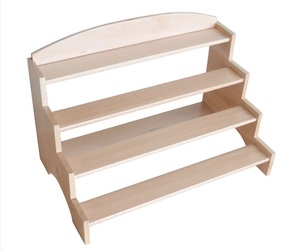Creating a Montessori-Inspired Learning Environment at Home
الجسم
In the realm of early childhood education, the Montessori method has long been celebrated for its child-centered approach and emphasis on fostering independence and a love for learning. While many associate Montessori principles with classrooms, you can also incorporate them into your home to create a Montessori-inspired learning environment for your child. In this guide, we will explore practical steps and ideas to transform your home into a space that encourages exploration, independence, and meaningful learning experiences.
Understanding Montessori Principles
Before we embark on creating a Montessori-inspired home environment, let's briefly recap some key Montessori principles:
- Child-Centered Learning: Montessori education revolves around the child's interests, choices, and pace of learning. Children are active participants in their education.
- Independence: A fundamental aspect of Montessori is fostering independence. This includes allowing children to make choices, care for their environment, and complete tasks on their own.
- Hands-On Learning: Montessori materials are carefully designed to be self-correcting, encouraging children to explore concepts through touch and manipulation.
- Order and Structure: Montessori environments are known for their organization and structure. Children learn to respect the order of the environment and materials.
- Mixed-Age Groups: In Montessori classrooms, children of different ages learn together. This promotes cooperation, mentorship, and a sense of community.
Steps to Create a Montessori-Inspired Learning Environment at Home
Now, let's dive into practical steps to bring Montessori principles into your home:
- Designate a Prepared Environment
Create a dedicated space for your child's activities and learning. This area should be well-organized and free from distractions. You can use a corner of a room or set up a specific playroom.
- Choose Montessori Furniture
Consider investing in Montessori furniture, such as child-sized tables and chairs. This furniture is designed to promote independence and comfort, allowing your child to engage in activities without assistance. Look for a Montessori store that offers these pieces.
- Create a Sense of Order
Maintain an orderly environment with a place for everything. Use shelves, bins, and labels to keep materials organized and accessible. Children learn to take responsibility for their belongings in an organized space.
- Incorporate Montessori Materials
Montessori materials are integral to the method. These materials are designed to facilitate hands-on learning and exploration. Examples include the Montessori Pink Tower, which teaches size and dimension, and the Montessori Moveable Alphabet for early literacy. You can find these materials at a Montessori store.
- Encourage Independence
Promote independence by providing child-sized tools for everyday tasks. Include a step stool in the bathroom, a low coat rack, and a snack station where your child can prepare their own snacks.
- Offer Choices
Allow your child to choose their activities and work at their own pace. Provide a variety of materials and activities to cater to their interests.
- Foster a Love for Learning
Cultivate a love for learning by allowing your child to follow their curiosity. Answer their questions, read together, and explore topics of interest.
- Emphasize Practical Life Skills
Integrate practical life activities into your daily routine. This can include pouring, buttoning, and other tasks that promote fine motor skills and independence.
- Promote Respect and Responsibility
Teach your child to respect their environment and materials. Show them how to care for and clean up after themselves. This instills a sense of responsibility.
- Create a Peaceful Atmosphere
Montessori environments prioritize peace and calm. Incorporate soft lighting, natural materials, and soothing colors to create a tranquil atmosphere conducive to focused learning.
Benefits of a Montessori-Inspired Home Environment
Creating a Montessori-inspired home environment offers numerous benefits:
- Independence: Your child will develop a strong sense of independence and self-confidence as they navigate their environment and engage in activities on their own.
- Love for Learning: A Montessori-inspired environment fosters a natural love for learning and exploration, setting the stage for a lifelong passion for knowledge.
- Order and Responsibility: Children learn to respect order, take responsibility for their surroundings, and develop strong organizational skills.
- Cognitive Development: Montessori materials support cognitive development, helping your child build a strong foundation in math, language, and other subjects.
- Social Skills: If you have multiple children, a mixed-age environment at home promotes cooperation, empathy, and mentorship.
Conclusion
In conclusion, creating a Montessori-inspired learning environment at home can have a profound impact on your child's development. By incorporating Montessori principles, furniture, and materials, you provide a space that encourages independence, hands-on learning, and a love for exploration.
Remember that the journey toward a Montessori-inspired home is a process. Start by making small changes, and gradually adapt your home to align with Montessori principles. By doing so, you empower your child to become an active, self-directed learner who thrives in a nurturing and purposeful environment. Explore Montessori stores for materials and furniture to support this transformative journey.














تعليقات